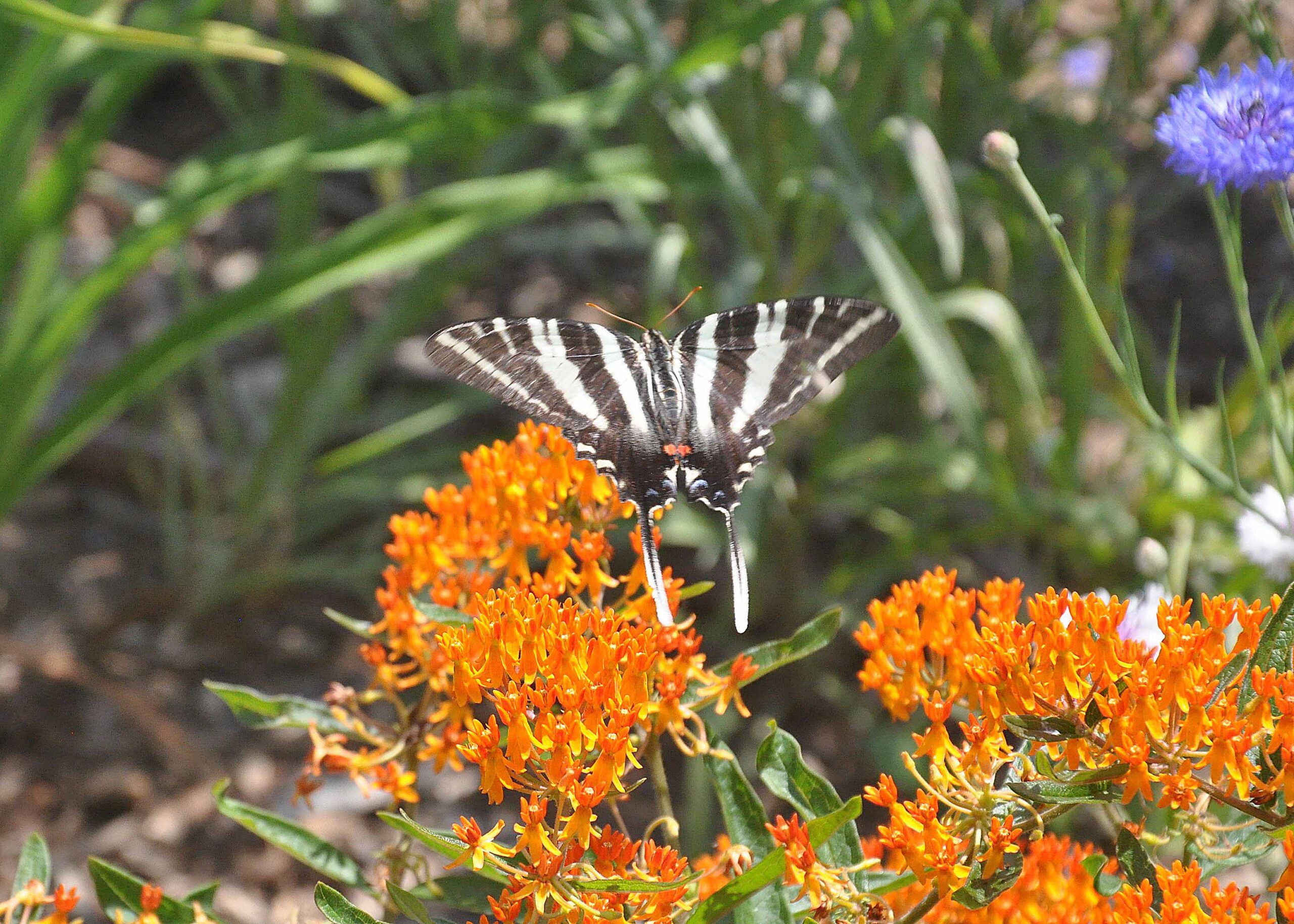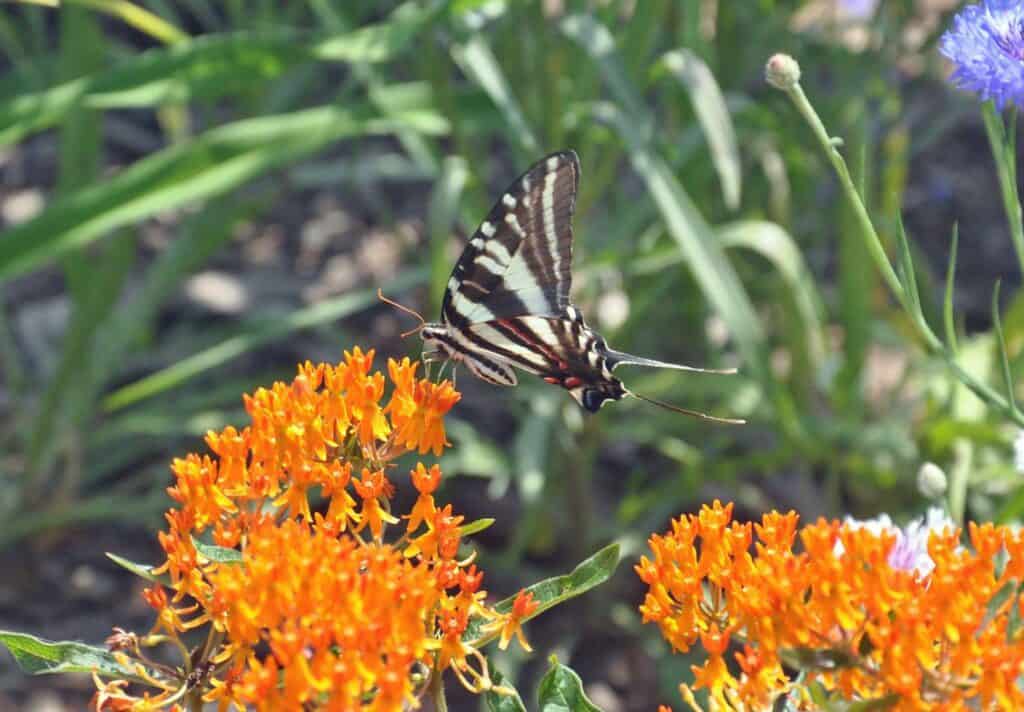There are six kinds of swallowtail butterflies in eastern Oklahoma. I had photos of five until Thursday morning when Becky found a zebra swallowtail feeding on butterfly weed in her flowerbed. It was the only one I’ve ever seen, and I was lucky enough to get pictures. Now I have photos of all six.
First, though, why are butterflies called butterflies? It goes back to folklore when it was believed that butterflies stole milk and butter. A popular story is that butterflies were once called flutterbys, but it’s not true. They were never called flutterbys, although I think flutterby is a better name for them. There goes one now, fluttering by.
Black Swallowtail Butterflies
The black swallowtail, the State Butterfly of Oklahoma. It was designated so by the Legislature in 1996. The male is mostly black, with two rows of large yellow spots on both forewings and hindwings.

The larval stage, or caterpillar, has distinctive bands of green marked with black and yellow. When startled or threatened, the caterpillar can produce a pair of bright yellow horn-like antennae on its head. The structure is called an osmeterium, from the Greek words meaning “odor organ.” The osmeterium releases an unpleasant odor, and in doing so discourages a potential predator. The organ is quickly withdrawn once the threat has passed. I could not smell anything from the one in the photo. Perhaps I wasn’t close enough or my sense of smell wasn’t that acute. You can easily attract these beautiful butterflies and their caterpillars to your garden by planting dill, fennel, or parsley, the host plants for the caterpillar.
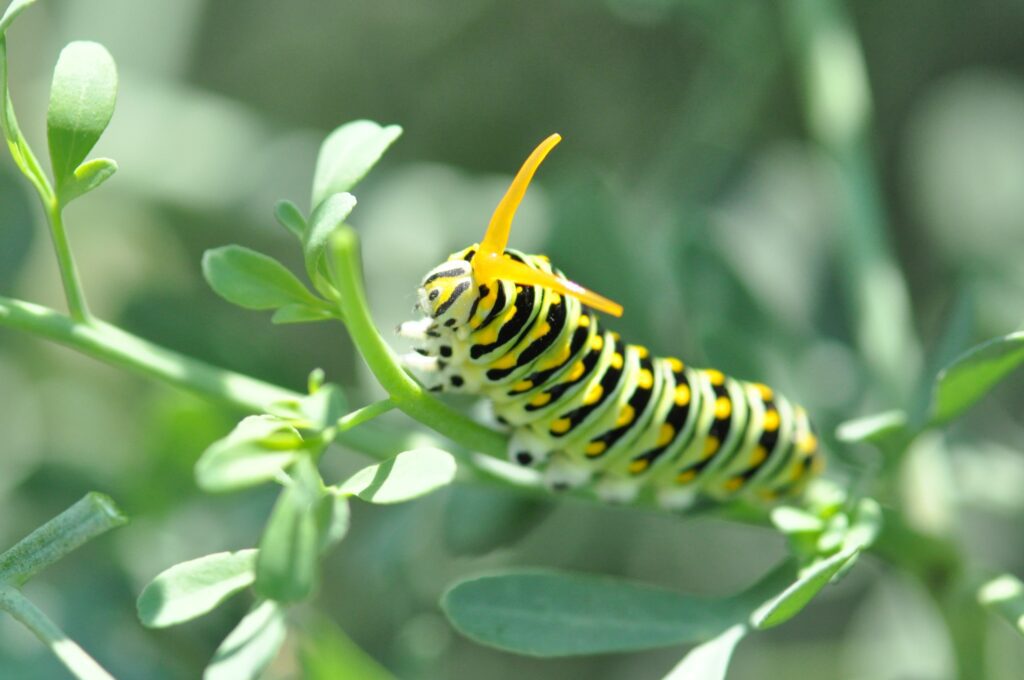
Giant Swallowtail Butterflies
The giant swallowtail is a large, dark brown and yellow butterfly that is seen east of the Rockies. It is the largest butterfly in Oklahoma and has a wingspan of 3¾–5½ inches. There are two broods a year, one in the spring and another mid-fall.
The wings of the butterfly are outlined in yellow spots, and a yellow band is seen across the wings between the thorax and abdomen. The caterpillar is another striking aspect of the butterfly.
Mature caterpillars are 2–2½ inches long. They are brown with buff patches of saddle markings. They resemble large bird droppings. Caterpillars feed on a variety of plants but are especially fond of the herb rue. If you plan to attract the butterfly to your garden, it’s best to plant rue. It will certainly attract them.
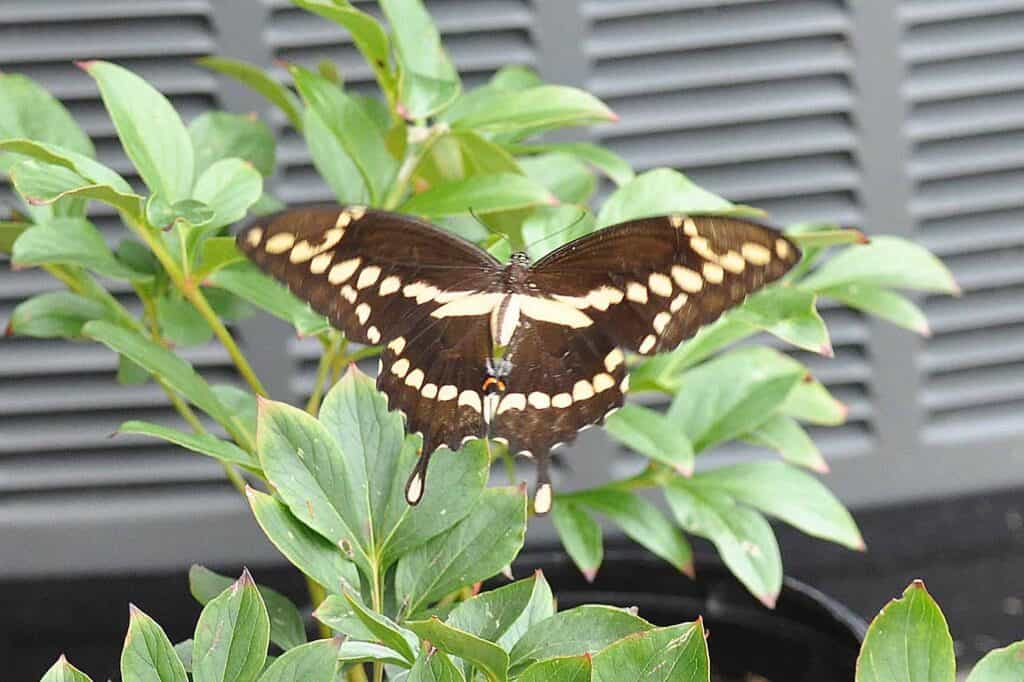
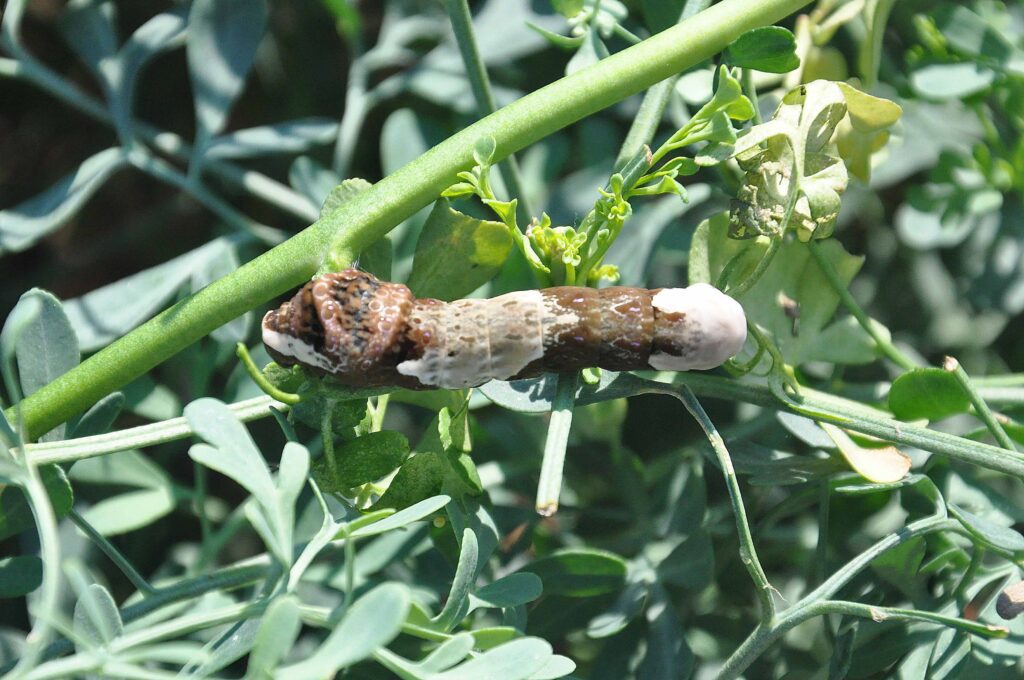
Pipevine Swallowtail Butterflies
The pipevine swallowtail is also called the blue swallowtail. It is the most familiar dark swallowtail after the black swallowtail. The forewings are black, with a row of pale spots near the wing margins. Hindwings are a lovely iridescent blue with a row of spots near the wing margins.
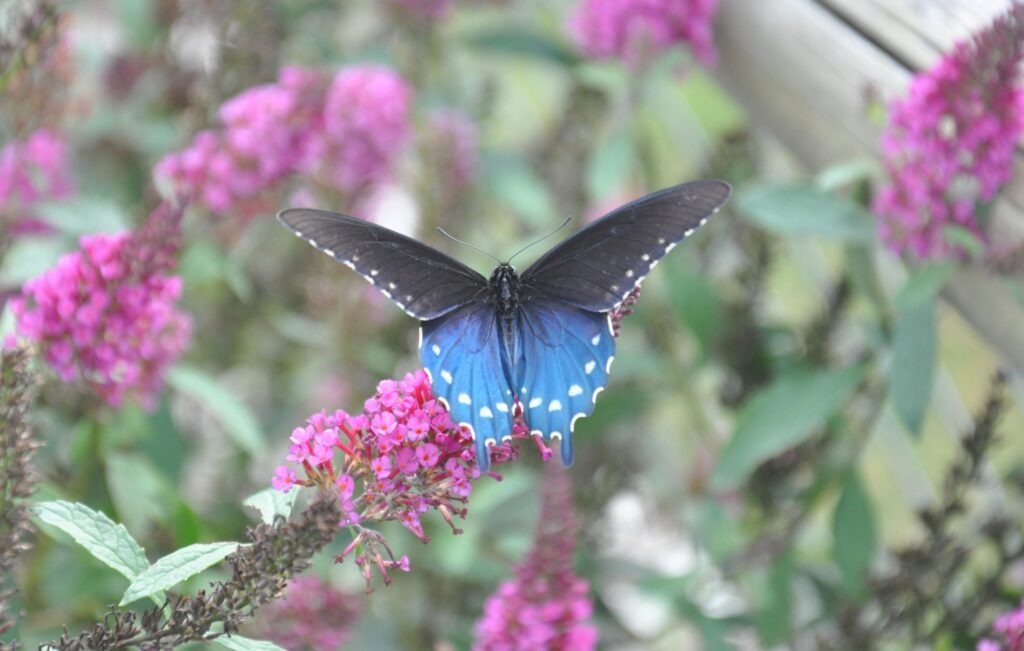
Spicebush Swallowtail Butterflies
The male spicebush swallowtail has dark forewings and greenish hindwings. The female is not as dark and has iridescent bluish hindwings with several orange spots near the ends. The wing margins have a single row of light spots.
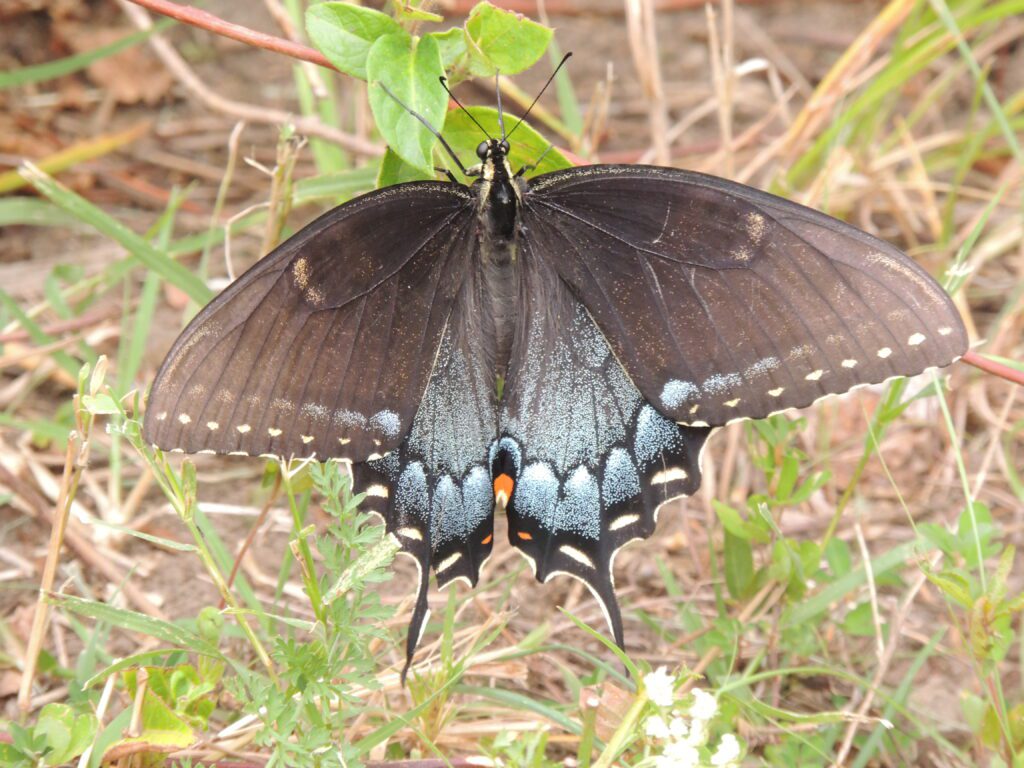
Tiger Swallowtail Butterflies
The eastern tiger swallowtail is possibly our most familiar butterfly. The male has bright yellow wings with black stripes. Females can be yellow or black and will have iridescent blue on the hindwings. The butterflies are found in forests and in yards and gardens.
The Zebra swallowtail, aptly named, is our black and white swallowtail. It is uncommon throughout its range and is only found in a few counties in far eastern Oklahoma. It is seen most often during the spring in moist woodlands. The wings have black stripes on a white background. The hindwings have very long tails. The male eastern tiger swallowtail is similarly striped but has yellow rather than white on the wings.
